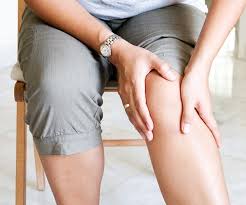
Osteomalacia means softening of the bones, which is mostly caused by a severe deficiency of vitamin D. Osteomalacia in the elderly can lead to fractures. With adequate vitamin D and calcium, osteomalacia can be treated and bones can be strengthened.
Symptoms of osteomalacia
When osteomalacia is in its early stages, you may have no symptoms, although symptoms of osteomalacia may be seen on radiography or other diagnostic tests. As osteomalacia progresses, you may experience bone pain and muscle weakness.
Low back pain with osteoporosis usually affects the lower back, pelvis, buttocks, legs and ribs. The pain may get worse at night or when pressing on the bones and it is rarely relieved by rest.
Ways to diagnose osteomalacia
-
Blood tests to measure calcium, phosphate, and vitamin D, kidney function and urine tests
-
X-rays: Images of the bones of the foot to look for abnormalities such as fractures (lines that look like fractures on X-rays but are not real fractures).
-
CT (computed tomography) scan of the spine to show changes in the vertebrae.
-
Bone biopsy: A needle is inserted into a bone so that the doctor can remove a small piece of bone tissue for analysis.
Causes of osteomalacia
Osteomalacia is caused by a defect in the process of bone maturation. Your body uses the minerals calcium and phosphate to build strong bones. You may develop osteomalacia if you do not get enough of these minerals through your diet or if your body does not absorb them properly.
Factors that cause osteomalacia include
Vitamin D Deficiency: Sunlight produces vitamin D in your skin. Vitamin D in the diet is usually from foods to which vitamins have been added, such as cow's milk.
It is found in egg yolks, fish and liver, etc., and a part of it is obtained from sunlight. Ultraviolet (UV) rays, when exposed to sunlight, irritate the skin, producing vitamin D. In addition, vitamin D is a hormone that plays an important role in bone and calcium metabolism. Vitamin D deficiency can be assessed by measuring 25-hydroxyvitamin D.
Diseases that may interfere with vitamin D metabolism include
-
Chronic liver disease
-
Renal tubular disorders
-
Hereditary disorders
Lack of exposure to sunlight and consequent vitamin D deficiency is one of the causes of skeletal disorders in the whole body. People who live in areas where sunlight is limited and are less exposed, or who consume little vitamin D through food, can develop osteomalacia. Vitamin D deficiency is the most common
cause of osteomalacia worldwide
Special surgeries: The stomach normally breaks down food so that calcium and other minerals can be easily absorbed in the intestines. If you have surgery to remove a part of your stomach or small intestine, the process of mineral absorption is disrupted and can lead to vitamin D and calcium deficiency.
Celiac disease is an autoimmune disorder in which foods containing gluten, protein found in wheat, barley and rye can damage your small intestine. A damaged intestine does not absorb nutrients well and can lead to a deficiency of vitamin D and calcium.
Kidney or liver disorders: These organs are involved in activating vitamin D in your body. Your kidney or liver problems can affect your body's ability to produce active vitamin D.
Drugs and some medications used to treat seizures, including phenytoin (Dilantin, phenytoin) and phenobarbital, can cause severe vitamin D deficiency and osteoporosis.
There are many things that people can do to strengthen healthy bones
-
Having a diet rich in vitamin D.
-
Get the right amount of sunlight
-
Reduce alcohol consumption
-
Quit Smoking
-
Exercise regularly.
-
Maintain a healthy weight
Risk factors in osteomalacia
The risk of osteomalacia is higher in people who do not get enough vitamin D in their diet and are less exposed to the sun, such as the elderly and people who are at home or in the hospital.
Medical nutrition therapy and prevention of osteomalacia
Osteomalacia is caused by low exposure to sunlight or by a lack of vitamin D in the diet, which can often be prevented by getting enough vitamin D.
Eat foods rich in vitamin D. Foods that are naturally rich in vitamin D include oily fish (salmon, mackerel, sardines) and egg yolks. Also look for foods rich in vitamin D such as whole grains, bread, milk and yogurt.
Take dietary supplements if necessary. If you do not get enough vitamins and minerals from your diet or you have a medical condition that your digestive system is not absorbing nutrients well, talk to your doctor about taking vitamin D and calcium supplements.
It should be noted that exposure to unprotected sunlight can increase the risk of skin cancer.
The main natural sources of vitamin D in food are fatty oils and cod liver oil. Otherwise, fortifying foods such as milk is essential to prevent vitamin D deficiency.
If you are on a vegetarian diet, you may be deficient in vitamin D.




